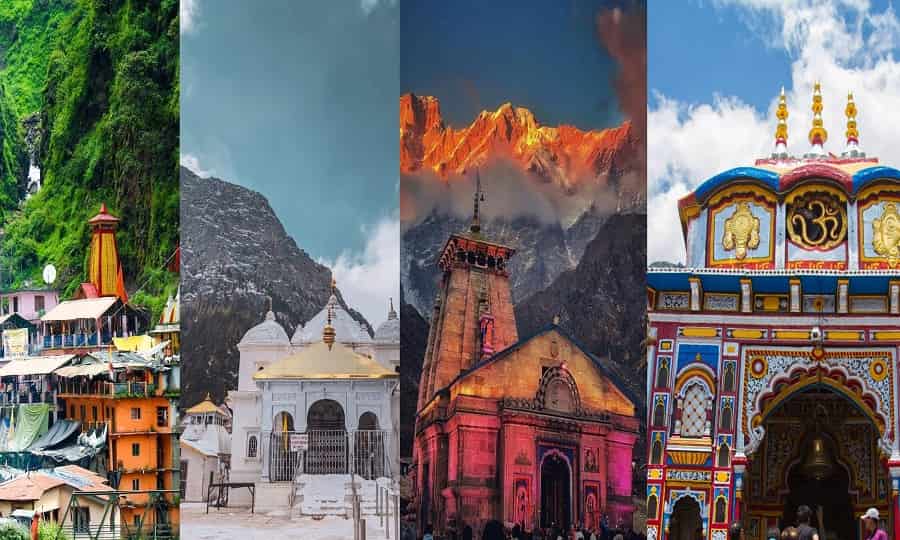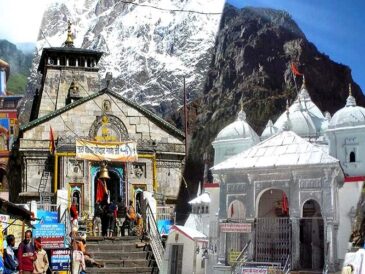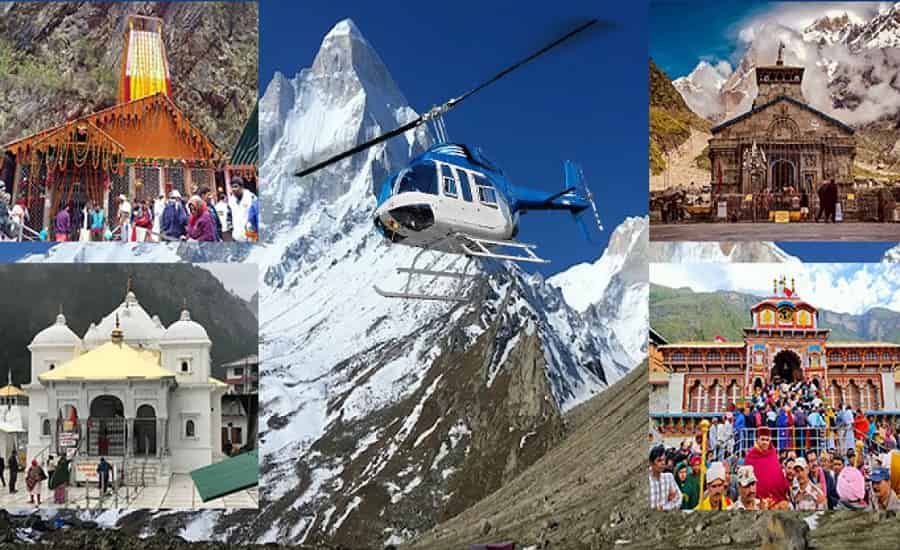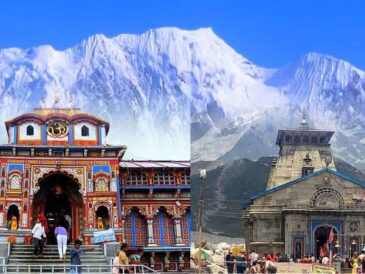The Char Dham Yatra in Uttarakhand, India, is a deeply revered pilgrimage that includes four sacred sites: Badrinath, Kedarnath, Gangotri, and Yamunotri. Known for its spiritual significance and stunning natural beauty, this journey holds a special place in the hearts of millions of Hindus. While each site has its own unique history and legends, together they form a powerful pilgrimage circuit that draws people seeking spiritual growth and connection.

Historical Context
The exact origins of the Char Dham pilgrimage are somewhat unclear, but references to these individual sites have existed for centuries. Traditionally, the journey to these sites was a demanding trek through the Himalayas, accessible mainly to dedicated sadhus (holy men) and wealthier devotees. However, major infrastructure improvements in the 1960s opened the doors for many more pilgrims to embark on this transformative journey.
Early Pilgrimage Traditions
Before the mid-20th century, reaching the Char Dham required physical endurance and determination. Pilgrims often faced steep trails and unpredictable weather, making the journey both a physical and spiritual challenge. This pilgrimage was seen as a way to cleanse oneself and seek blessings from the divine.
The Sacred Sites of Char Dham
Yamunotri
Historical Overview
Yamunotri, located in the Uttarkashi district, is the first stop on the Char Dham Yatra. It is dedicated to Goddess Yamuna and is believed to have been established in 1839 by King Sudarshan Shah of Tehri. The area features hot springs, especially Surya Kund, where devotees prepare offerings.
Cultural Significance
Yamunotri is important as the source of the Yamuna River, which is regarded as one of the holiest rivers in India. Bathing in its waters is believed to wash away sins and protect against untimely death.
Legends and Myths
According to legend, Yamuna is the daughter of the Sun God and the twin sister of Yama, the god of death. Sage Asit Muni lived nearby and could not visit Gangotri in his old age. To help him, a stream of Ganga began to flow beside Yamuna.
Gangotri
Historical Overview
Gangotri, located about 18 km from the Gaumukh glacier, is dedicated to Goddess Ganga. The original temple was built by Gurkha general Amar Singh Thapa in the early 19th century.
Cultural Significance
Gangotri is considered the place where Ganga descended to Earth to purify humanity. Pilgrims flock here to seek blessings and absolution from their sins.
Legends and Myths
One famous legend tells of King Sagar’s 60,000 sons, who were turned to ashes after disturbing Sage Kapila. Their salvation was sought through Ganga’s descent, achieved by the penance of Bhagirath, who prayed for Ganga to flow to Earth.
Kedarnath
Historical Overview
Kedarnath is located in the Rudraprayag district and is known for its remoteness. It is believed that the temple was originally built by the Pandavas, and Adi Shankaracharya established the current structure in the 8th century.
Cultural Significance
Kedarnath is dedicated to Lord Shiva and is one of the twelve Jyotirlingas. Many pilgrims come here to seek forgiveness and spiritual upliftment.
Legends and Myths
According to legend, the Pandavas sought Lord Shiva’s forgiveness after the Mahabharata war. To avoid them, Shiva transformed into a bull and dived into the ground, with parts of his body emerging at different locations, including Kedarnath.
Badrinath
Historical Overview
Badrinath, nestled between the Nar and Narayan peaks, is one of the holiest shrines in Hinduism. Adi Shankaracharya founded it and discovered the deity, Lord Badri, in the Alaknanda River.
Cultural Significance
Badrinath is part of the 108 Divya Desams and represents devotion and the quest for divine blessings. Its stunning backdrop adds to its spiritual charm.
Legends and Myths
One popular legend states that Lord Vishnu, criticized for his indulgent ways, meditated here, while Goddess Laxmi transformed into a berry tree to protect him. Another story suggests that Vishnu tricked Shiva into leaving the site to establish his presence.
Transformation of the Char Dham Yatra
Infrastructure Development
In the 1960s and 1970s, the Char Dham Yatra transformed significantly due to government efforts to improve access to these remote areas. New roads and facilities were built, making it easier for pilgrims to undertake the journey.
Growth in Pilgrimage
With improved accessibility, the Char Dham Yatra became popular among people from various backgrounds. Today, thousands of devotees visit each year, and helicopter services have been introduced for those unable to trek the mountainous paths.
Spiritual Significance
The Char Dham Yatra is more than just a physical journey; it is a deeply spiritual experience. Many pilgrims view this pilgrimage as an opportunity for self-reflection and connection with the divine. Each site offers unique spiritual experiences that help devotees deepen their faith.
Conclusion
The Char Dham Yatra stands as a symbol of India’s rich spiritual heritage. With its deep-rooted histories, legends, and the enduring quest for redemption, it continues to attract countless pilgrims. As the pilgrimage adapts to modern times, it remains anchored in ancient traditions, offering a sacred space for spiritual growth and connection.
Suggested to Read:


